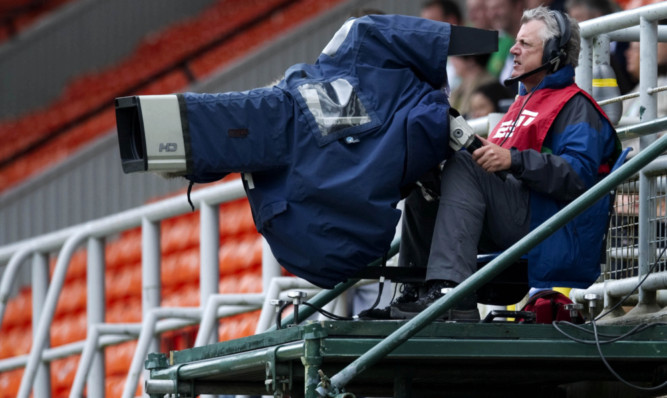Scottish clubs will fall even further behind their neighbours from south of the border if they cannot persuade TV bosses to hand over more cash, a leading sports accountant has warned.
English top-flight sides last month celebrated landing a bumper £5.136billion windfall after handing new terms to Sky and BT Sport.
But that three-year deal – which kicks in from 2016 – dwarves the Scottish Professional Football League’s current agreement with the satellite broadcasters. It runs until 2017 but the £15million a year it pays out to the SPFL is shared by all 42 member clubs.
Now Charles Barnett – a partner in the Professional Sports Group at accountancy and business advisory firm BDO LLP – has warned even the likes of Celtic or a rejuvenated Rangers can forget about ever signing big earners from the Barclays Premier League or even the Sky Bet Championship if the gap between the two nations’ income streams are allowed to widen.
He said: “This is a further sign of the growing financial gap between Scottish and English football.
“If Scottish clubs are unable to buy players from the first and second tier of English football then the game will potentially suffer in Scotland in years to come. In the future it is likely that Scottish clubs will be buying from the lowest tier in English football which will consequently, and positively, force clubs to develop more home grown talent.
“However, the best of the home grown talent will then be drawn to the third, second and possibly even the first tier of English football so we could see a revolving door emerging where talent is developed here but quickly moves to England.”
And Barnett claims Scottish clubs have sold off their TV rights for almost a tenth of their real value.
He believes Hampden chiefs and club bosses must campaign for a bigger share of the cash or watch the Scottish game decline even further.
“To put the current financial anomaly into perspective, the £20million cost of showing two English Premiership games on Sky is more than all of the broadcast fees that Scottish football receives in a year,” he said,
“Simple arithmetic indicates that if Sky and BT are happy to pay £1.712billion a year for English football the comparable figure for Scotland should be £142million (Scotland has 8.3 per cent of the population of the UK). To be getting just over one tenth of that at £15 million is unfair and unsustainable.
“The hierarchy of Scottish football must start to lobby for more money. It is unlikely that they will get £142million from broadcasters but even another £20million or £30million, which compared to the investment in the English Premiership is a drop in the ocean, would make an enormous difference to the game in Scotland.
“Football’s administrators need to persuade the broadcasters that we have a product that is widely followed and supported but may disappear or dissipate if sufficient funds are not put into the game in the near future.
“Of course the clubs also have to make the game more attractive to fans as well as TV companies, and this will involve greater investment in home grown talent, better facilities, and more affordable ticket prices.
“More money from broadcasting will help make the game more attractive but clubs need to keep fans going to the grounds and developing a love of the game if it is to last into the next generation.”
